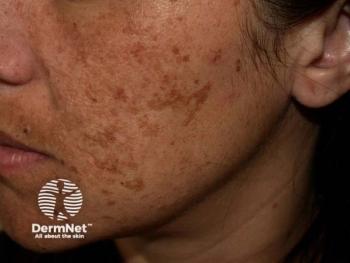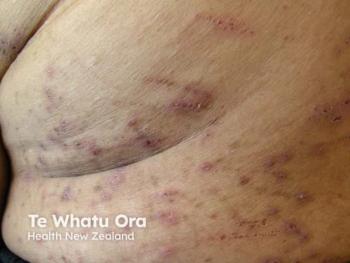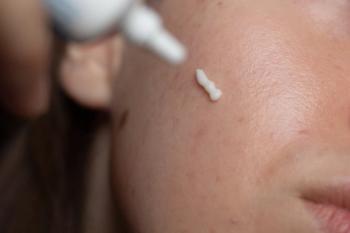
Delivering Skin Health to Isolated Islands with the Philippine Dermatological Society and ILDS
In celebration of World Skin Health Day, Jasmin Jamora, MD, and her team at PDS enhance skin health access in remote areas through outreach clinics and education.
In a country of over 7,000 islands, providing universal health access can be a daunting task. For the
Q&A
DT: Can you give an overview of your involvement with this year’s ILDS grant project for World Skin Health Day?
Jamora: For this year's ILDS grant, we were invited to submit a project, and I had requested Vinna Crisostomo, MD, because she is the perfect person to do that. She has the background and the experience, having been the municipal health officer in the province of Palawan for about 10 years before she became a dermatologist. Soshe'svery familiar with that area. So, as the president, all I did was ask her to come up with the project, and she worked with the chair of our outreach committee, Ricky Hipolito, MD, and the cluster head, Judy Eusebio, MD. The project proposal was extremely successful. And from there, she worked as the project lead, working on all the logistics and all the details. I simply submitted the project to the site, and then Dr. Crisostomo and her team carried out the project. I was just along for the ride. But I'm very happy to represent PDS. We're very proud of her and this project; we're very proud of it as well, as it is an initiative of the PDS.
DT: Can you describe the inspiration behind launching these outreach clinics and education initiatives? What specific skin health challenges are the most pressing in these regions?
Jamora: So, Palawan is quite popular for tourism. They get millions of tourists every year. But at the same time, what people don't realize is that this is a cluster of islands that can be quite far apart. And in fact, the area that Dr. Crisostomo chose, Linapacan, I didn't realize was so isolated. We flew an hour and a half from Manila to El Nido. We took a one-hour car ride to the port, then we took another 3-hour open ocean ride to the island. And that island has 10 barangays (small village districts) and it's scattered throughout lots of small islands, which can be as far as 1 to 3 hour boat rides apart. And that's when I realized it really was a geographically isolated and disadvantaged area. There was one day when we spent an hour and a half going one way into a barangay, seeing the kids there, some of whom were indigenous children, and then another hour and a half going back home. It takes them so long in a boat just to get to the main island. And everything had to be brought in, from pineapples to steel rods for the houses. It's just incredibly isolated. If you don't have a boat, you're not going to get anything into this island. And so it just reflects the lack of access to much of basic medical care.
So we met the gentleman who's the municipal health officer there, and he has to take care of all these 10 barangays, and it's a huge job. I was just amazed. I didn't realize that as somebody living in Manila, where we have all the conveniences. It's an urban city, it's a world city, and everything seems easy. But then you get out to these places and you realize it's so isolated. So we do need so much access to care for a lot of these patients. One day, we did the medical and the surgical mission. We saw over 100 medical cases where we gave free medications. We also saw 55 surgical cases, from small cysts to lipomas, and then some small surgeries, excisions, and things like that. We also saw some skin cancers. And then the last component was also outreach. So one of the boat rides was to see about 150 kids from the school. Dr Crisostomo had prepared some hygiene kits. So we gave them toothbrushes, nail clippers, other basic hygiene stuff, as well as small notebooks and samples from CeraVe.
DT: How did the nationwide radio campaign complement your on-the-ground efforts, and what kind of response or engagement did you see from it?
Jamora: So we worked with a local radio station called Bombo Radyo. It's a free radio station, and they really work on advocating. The PDS has a 2-year-long memorandum of agreement with this radio station. And it's just provincial. So they broadcast in dialects. And we've been doing educational skin campaigns on leprosy, topical steroid abuse, IV glutathione abuse, basic eczema, and scabies. We were very intentional about making it a concerted effort for everyone to talk about World Skin Health Day with a broadcast on July 8. And so all the 11 radio stations had 11 dermatologists from the PDS on Bombo Radyo in different dialects, talking about World Skin Health Day and how people should have access to care for skin, hair, and nails. The PDS theme for this year is "Skin Health for All." We just kind of adopted what World Skin Health Day was also going for. Then we also coordinated with our 17 training institutions throughout the Philippines. On July 8, they fielded their physician doctors and the residents to give a Lay Forum to their outpatients on basic care of skin, hair, and nails, for a 2-pronged campaign.
DT: What are some of the biggest logistical challenges that you've encountered during this project thus far, and how did you address them?
Jamora: Even barring flight cancellations, we were able to complete the schedule and the task. And the ocean crossings were also rough. We couldn't land on the island. So we had to stay overnight on another island where the tide was so low that they had to drag out boats, and we had to go one by one on these tiny fishing boats. And then we had to sleep with no lights, no air conditioning, no electricity. It was just really tough. They're just those kinds of logistical things for us as doctors, but you can imagine for the patients as well. And the week after we came home, there were 4 typhoons in a row. It's just incredible. We were so blessed that we missed that bad spell of continuous rain and thunder, and low-pressure areas. July is not the best month for the Philippines. It really is typhoon season.
DT: How do you hope the initiative will influence both long-term dermatologic care and awareness in these underserved regions in the Philippines? What else do you hope clinicians would like to learn or gain from hearing about this initiative?
Jamora: The tagline "health without skin health is no health at all" is so important. We take it for granted that skin is just an outer covering. For example, we saw a case of scleroderma there and we were able to give her care. We saw a patient with a basal cell carcinoma on the face, which had extended into her orbital rim. It's so crucial for dermatologists to be able to give their time and efforts to these kinds of things. I think, in a world that is increasingly becoming more obsessed with aesthetics and dermatologists kind of having to half their time between beauty and other skin problems that maybe even basic doctors could miss, it's the fact that universal health care is still not yet implemented here. So we are still on the road to empowering family physicians, general physicians, primary care physicians, and dermatologists. The gap is so much larger for people to access dermatological care, especially in remote areas. So I think it's a big concern. And I love that this initiative is focusing a lot on skin health as a great part of overall health.
And then for me personally, what did I learn? I learned that this should not be just a one-time project, that it's not just a novelty item or something to brag about or boast about. It should be an ongoing initiative, and there must be efforts made at the deeper level, let's say to build networking or serving care in the remote areas through teledermatology. Maybe our society should dig into that so that we can find a way that is sustainable and realistic in order to serve the outer areas better, so that they do have access to dermatologists, even if it's in a remote way.
[This transcript has been edited for length and clarity]
Newsletter
Like what you’re reading? Subscribe to Dermatology Times for weekly updates on therapies, innovations, and real-world practice tips.


















